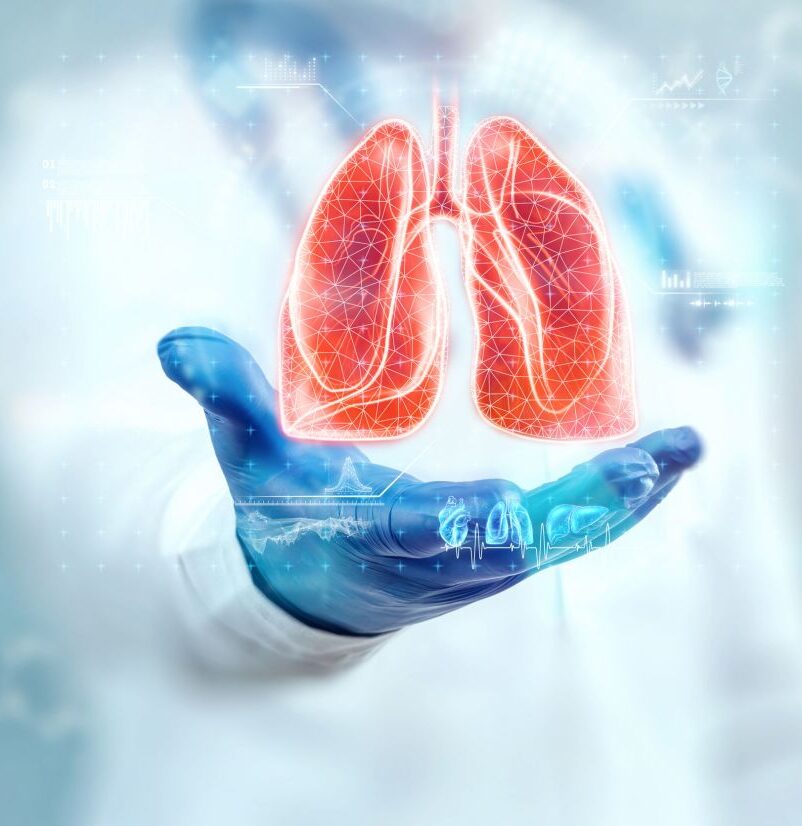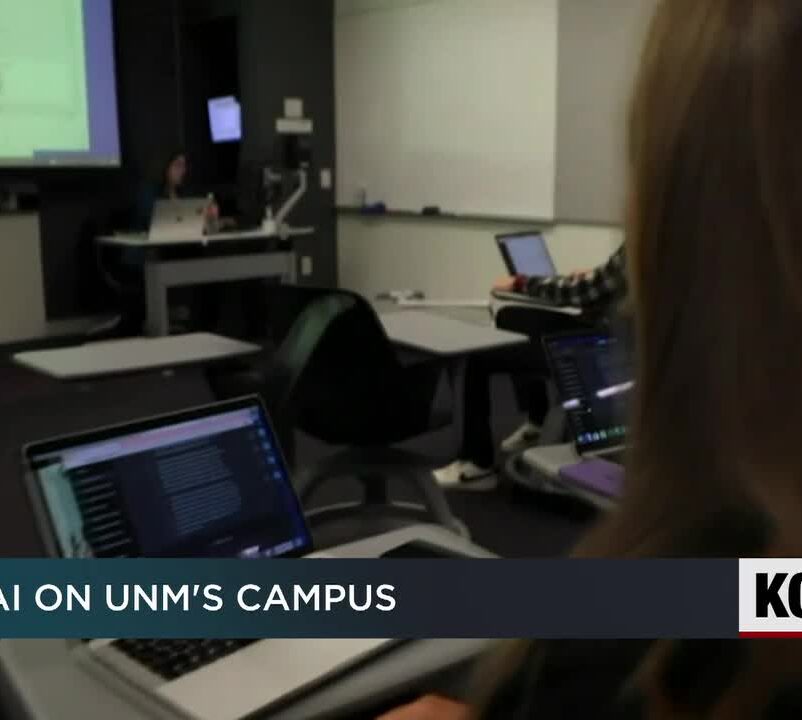
The use of artificial intelligence (AI) in health screening holds the potential to save lives through early intervention.
The Aberdeen Royal Infirmary in the United Kingdom is reported to be conducting a trial using AI to aid radiologists in the detection of breast cancer.
The pilot programme has already assisted in the early detection of breast cancer in a patient who will now undergo surgery.
Also in the UK, Kheiron Medical Technologies has developed an AI model, Mia, as an additional check for mammogram scan reviews.
Doctors involved in the trial said the AI model is able to identify areas of concern that are sometimes too small for the naked eye.
Ongoing testing of AI is also taking place at the Bacs-Kiskun County Hospital in Hungary.
A doctor told the New York Times that she was initially sceptical about the technology but changed her mind when the AI spotted a tiny tumour in a 58-year-old woman’s X-ray.
In Malaysia, consultant cardiothoracic surgeon Dr Anand Sachithanandan, founding president of the non-governmental organisation Lung Cancer Network Malaysia (LCNM), says he believes in the potential of AI to assist in the early detection of lung cancer.
“About three years ago, I became aware of some initiatives in the UK and elsewhere exploring the use of AI to screen for lung cancer.
“I then met with international industry experts to explore its potential use here,” Dr Anand adds.
To assess the feasibility of utilising the technology to screen for lung cancer in an urban community at the primary care level, LCNM initiated a free lung cancer screening using AI-enabled chest X-rays at health clinics in the Klang Valley.
According to Dr Anand, the AI X-ray software, qXR, from India-based tech company Qure.ai has the potential to improve the accuracy and efficiency of chest radiography in the screening for lung cancer.
He says the tool utilises the power of deep learning algorithms, enabling it to detect, pinpoint and identify abnormalities.
“The deep convolutional neural network (a type of AI commonly used for analysing images) has been shown to enhance radiologists’ performance in AI-enabled computer-assisted detection techniques and is designed to assist radiologists and general physicians in recognising anomalies on chest X-rays.
“It reduces error and omissions and helps radiologists focus more on those chest X-rays flagged up as ‘abnormal’,” he says.
Nip it early
Lung cancer is one of the most common cancers in Malaysia, with the Journal Of Thoracic Oncology saying in a 2020 report that it accounts for 10% of all malignancies.
According to the report, the lifetime risk for men in Malaysia is about one in 55, while for women it is about one in 135.
Dr Anand says that the country is burdened by late-stage disease due to most patients only getting a diagnosis at a more critical phase of the disease.
The late diagnosis is due to several factors, he said, including a lack of awareness, the stigma associated with smoking, and the fear of confirmation that it’s cancer.
“Also, often in the early stages of this disease, there are no symptoms or signs, or it tends to be vague and non-specific, like a cough, and is thus ignored or dismissed.
“This is tragic because it is a curable disease if detected early,” he says.
Dr Anand explains that screening is an attempt to detect the disease at an early or pre-clinical stage before a person becomes ill or develops symptoms.
“In the context of lung cancer, if we can effectively screen for and detect the disease at an early stage, it can be treated much more effectively and often cured.
“It is also less toxic and less costly to treat early-stage lung cancer compared to advanced-stage disease.
“Patients will have a better prognosis (outcome) in terms of survival and quality of life if the cancer is detected early,” he says.
He adds that the current gold standard for lung cancer screening is low-dose computed tomography or LDCT.
“It is a non-invasive, painless scan, often requiring only a single breath, with minimal radiation as no contrast dye is injected,” he says. Hence, no drips or needles are required, and similarly, no prior fasting or blood test is necessary.
“Published trial data, including two major studies in the past 10 years, strongly supports the use of LDCT screening for detection of lung cancer in ‘at-risk’ groups such as former or current heavy smokers,” he says.
He adds that there is emerging evidence that those with a family history of the disease may also benefit from screening.
However, according to Dr Anand, a normal LDCT scan in a private hospital may cost between RM500 and RM1,000, making cost one of the primary barriers for patients to pursue additional testing.
The scan may be significantly subsidised at government facilities, but he says patients face long wait times for diagnostic and staging scans due to overwhelming caseloads.
He advocates for the adoption of AI in lung cancer screening in the country, highlighting its potential to alleviate financial burdens and widen access.
“I think AI has immense potential to be a real game-changer in screening for lung cancer.
“The adoption of AI can enhance diagnostic accuracy, reduce turnaround times, reduce waiting times, and expedite referral of suspected cases to the relevant specialist for further investigation,” he says, adding that the tool can be deployed at the community level, including at Klinik Kesihatan.
Dr Anand reports that more than 10,000 individuals took part in the LCNM screening programme, which spanned a duration of 20 months starting in May 2021.
Indeterminate pulmonary nodules (IPN), which are growths or spots that occur on the lungs but whose nature or potential harm is unknown, were detected in 2.5% of cases.
“These were people who saw a GP for whatever reason and received a chest X-ray investigation if their GP deemed it necessary.
“Of course, not all IPNs represent lung cancer. The individuals with an IPN then need to be further assessed with a LDCT scan,” he says.
The clinicians’ response to the AI X-ray software has been positive, he says.
“The patient receives a conventional chest X-ray, and the image is then uploaded to the cloud-based AI software, which analyses it and generates a detailed report highlighting areas of concern on the X-ray image,” he adds.
The generation of the report takes approximately two minutes, enabling primary care physicians to determine the next course of action.
“So it shortens turnaround times and facilitates efficient clinical decision-making, which is vital when dealing with suspected lung cancer.
“The doctors found the AI technology easy to use and affordable, and thus, I think, it is scalable.
“As I understand, no specific training is required other than to be familiar with the software,” he says.
Confronting challenges
Dr Anand reiterated that it was difficult to convince patients to have the recommended LDCT scan after the AI X-ray result because of barriers such as cost and, ultimately, fear of a probable cancer diagnosis.
He says a “patient navigator” was introduced to help guide the individuals through the process and address their concerns.
Dr Anand adds that the programme partners included private hospitals that provided free LDCT screening, though additional charges would apply if further investigation or treatment was required.
“Many of them, however, did not pick up the phone call or reply to our SMS. Presently, a retrospective review of all the IPN cases is being painstakingly conducted.
“We need to know how many of the IPNs were indeed early lung cancers.
“An added challenge we faced was due to the fact that much of the screening was done during the pandemic,” he says.
The next stage, he says, is to locally demonstrate the efficacy of the technology, with the goal of one-stop and same-day LDCT screening for patients with IPN detected by the AI X-ray tool.
“This will improve compliance and reduce the attrition or dropout rate. If this works, it can be ramped up in tandem with awareness campaigns and support for smoking cessation,” he adds.
Elsewhere in Malaysia, hospitals are using AI in other ways. Sunway Medical Centre, for instance, has announced a partnership with a tech company to optimise molecular imaging protocols using AI-modelled reconstruction for cancer diagnosis.
In a report in May, Gleneagles Hospital Kuala Lumpur CEO Hoo Ling Lee said there is value in embracing AI technology for healthcare, adding that it could translate to better patient outcomes and improved efficiency.
The hospital has adopted AI Retinal Image Analysis, which is able to screen and diagnose up to 35 retinal diseases, including macular degeneration and optic lesions, as well as provide health risk assessments for other chronic diseases.
Dr Anand asserts that the adoption of AI is inevitable, saying that “it has to be harnessed and incorporated carefully and thoughtfully with appropriate regulations. We must not trade security and privacy for speed or convenience”.
He adds that it’s important to recognise the limitations and potential pitfalls of technology.As an example, he cites MIT researchers in the United States who have developed an AI-powered tool called Sybil to detect the future risk of lung cancer.
According to an MIT report in January, Sybil can analyse LDCT image data without the assistance of a radiologist to predict the risk of a patient developing lung cancer within six years.
He feels technology should complement and not compete with radiologists.
“This can also create patient anxiety and affect medical insurance coverage.
“Conversely, it allows for more meticulous surveillance of such high-risk individuals so that appropriate intervention can be undertaken at the first sign of a tumour,” he says.
Dr Anand highlights that the overall number of cancer cases is expected to rise by 30% by 2030, as projected by the Health Ministry, emphasising the importance of addressing this growing concern.
Late-stage disease coupled with a shortage of relevant specialists in government hospitals could mean more delayed diagnoses and treatments, he says, adding that early screening is the best way forward.
“Disease progression, from early to late, is a real and serious concern; hence, delays should be minimised.
“If the AI technology performs well enough, it can be scalable and deployed widely, providing for less costly, more efficient, and more equitable screening.”





